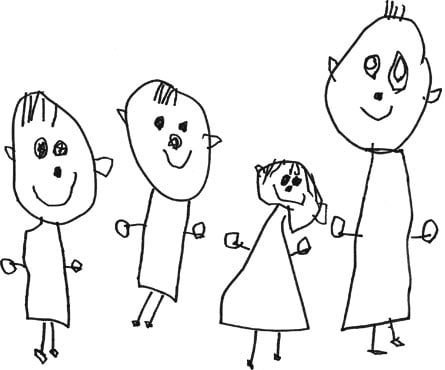Want more information?
Contact us today!

"Our child has more curiosity, self-confidence and patience. He understands respect and tolerance."
We view curriculum as everything that happens during our time together with the children. This includes moments to explore relationships and create a classroom community that nurtures the children. We begin each school year with attention to creating not only a beautiful environment that invites curiosity and exploration, but an emotional environment that encourages kindness, respect, tolerance, and love for each other.
Our classrooms have uncluttered shelves with open-ended materials from nature to supplement basic early childhood materials like blocks, puzzles, and dress-up clothes. In the first weeks, bulletin boards are empty, ready to be shaped by the life of the classroom, rather than filled with commercial decorations.
We create long stretches of open time for the children’s play and exploration during the day, believing that children deserve the opportunity to spend time with each other and with their ideas, questions, and challenges.
Children have opportunities to engage in sensory exploration, drama play, block building, game playing, puzzle work, reading, writing, drawing, art, science, and math activities. You’ll see children playing with their peers or alone. You’ll see teachers watching and listening to children, documenting their play with photos and notes, offering resources to support and extend their play, and playing alongside kids.
There are periods of the day, and indeed, times during the year, when no obvious project work is underway. We value these times for the informal work of learning more about who we are, working with intense feelings, or relaxing together in easy friendship. Though holidays are not a focus of our curriculum, our time together includes small and large celebrations and the rituals that come with the rhythm of the seasons and routines of our life together as a group.
Collaborative group work, both large and small, is considered valuable and necessary to advance cognitive development. Children are encouraged to dialogue, critique, compare, negotiate, hypothesize and problem solve through group work. Within the Reggio Emilia approach, multiple perspectives promote both a sense of group membership and the uniqueness of self.
Documentation of children’s work is viewed as an important tool in understanding children’s learning and their process of learning. Teachers use a variety of media, including photographs, daily journals, videos and displays to make the children’s learning visible to the families. Our goal is give an authentic picture of each child’s development: socially/emotionally, cognitively and physically.

"Our child has more curiosity, self-confidence and patience. He understands respect and tolerance."